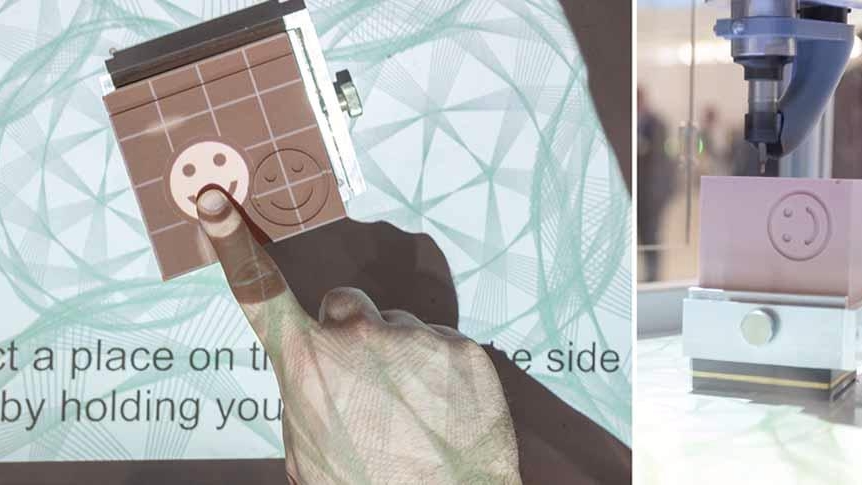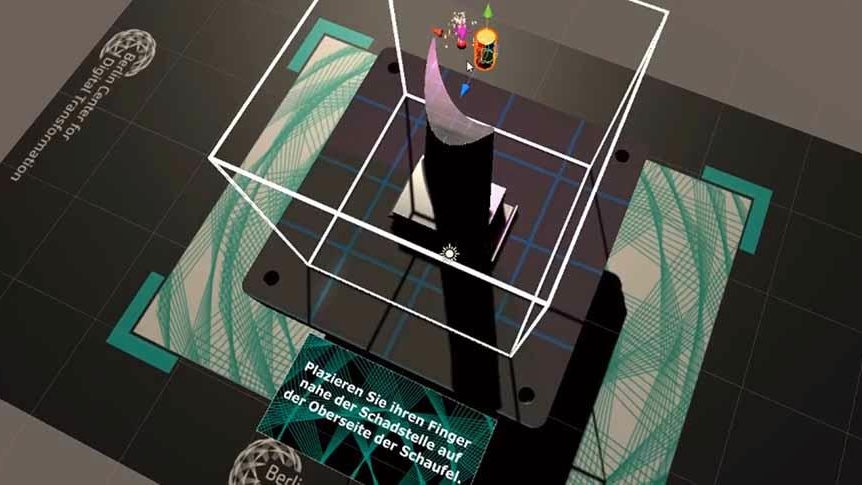The ProEnv project was part of the Berlin Center for Digital Transformation initiative to research smart production and maintenance environments of the future.
The scientists of Fraunhofer FOKUS use augmented reality technologies as well as visualization and projection techniques in the project to display information, such as instructions or questions to the operator, directly on and on the workpiece to be processed. He can make decisions at the touch of a finger, e.g., select the edge to be milled. The exact current position and orientation of the workpiece have been determined by a camera-based object recognition system developed in-house.
The Fraunhofer institutes FOKUS, HHI, IPK, and IZM are working together on the project. The Berlin Center for Digital Transformation is funded by the governing mayor of Berlin, the senate chancellery - higher education and research and by the European Regional Development Fund (EFRE).

